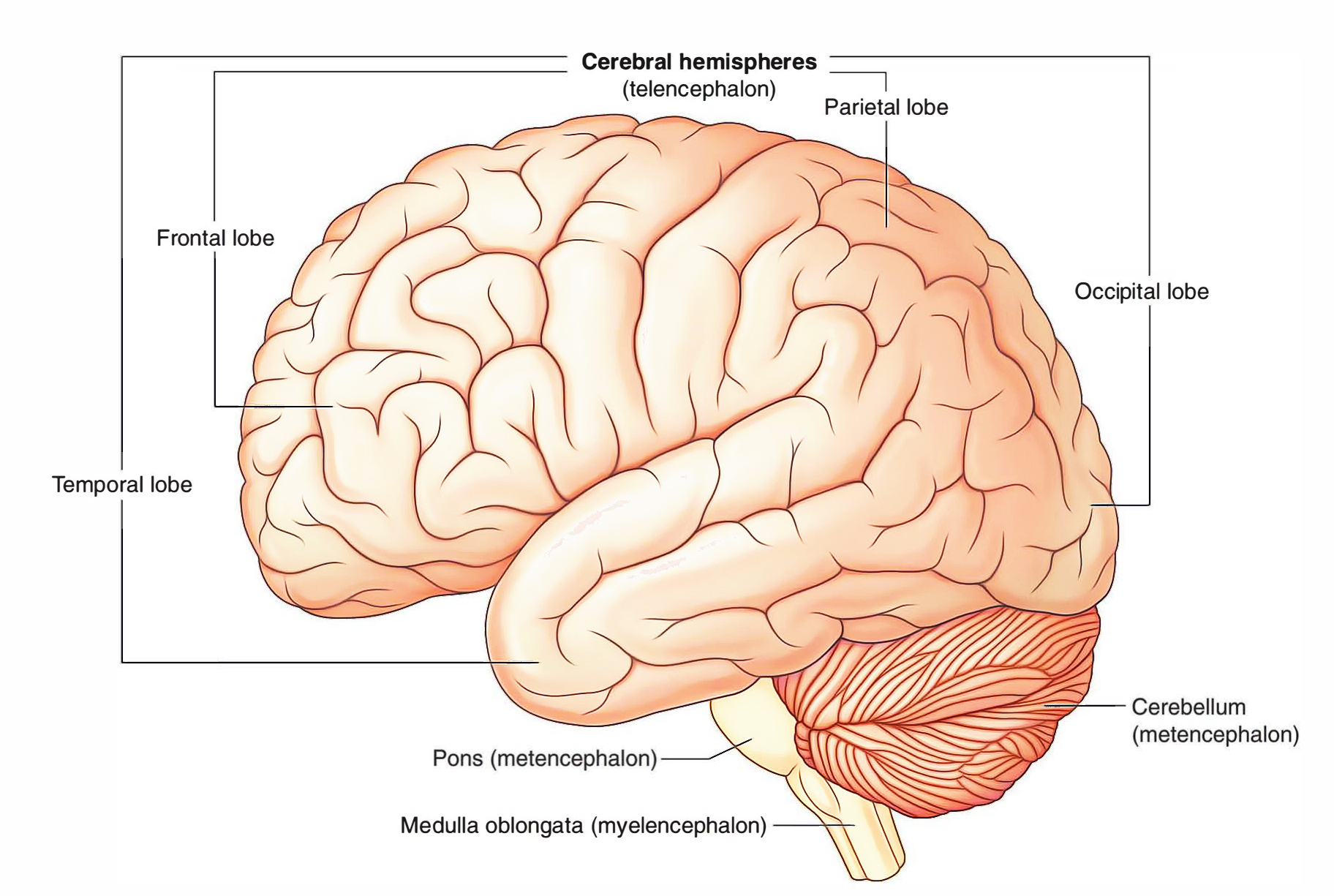The parietal lobe is one of the four lobes of the cerebrum which and it lies posterior to the central sulcus and above the lateral sulcus. It is the major centre for reception and evaluation of all sensory information except smell, hearing and vision.
In the parietal lobe:
1. The postcentral sulcus runs downwards and forwards, a little behind and parallel to the central sulcus. The area between these two sulci is called postcentral gyrus.
2. The rest of the parietal lobe is divided into superior and inferior parietal lobules by an intraparietal sulcus.
Structures of the Parietal Lobe
Postcentral Gyrus – this area is the primary somatosensory cortex that gathers sensory information and loads it on a sensory homunculus. This area is also known as Brodmann Area 3.
Posterior Parietal Cortex – Its function is to provide coordination of movements and spatial reasoning, plays an important role in attention to the new stimulus.
Superior Parietal Lobule – It assists in the determination of one’s own spacial orientation as well as of other objects like addresses and routes. It gathers important input by hand, that is, it aids the coordination of fine motor skills.
Inferior Parietal Lobule – Also referred to as the Geschwind’s Territory, this region plays an important role in assessing facial expressions to get an idea of emotions. It also helps in processing language, mathematical operations, and body language.
Primary Sensory Area – This is where the impulse from the skin is gained and interpreted, such as warmth, cold, touch, and pain.
Functions of Parietal Lobe
The parietal lobes play several essentials roles in our body. One of the major functions is to receive and process sensory information from all over the body. The somatosensory cortex is located within the parietal lobes and is important for generating touch sensations. For example, the somatosensory cortex helps us to identify the location of a touch sensation and to find the difference between sensations such as temperature and pain. Neurons in the parietal lobes receive touch, visual and other sensory information from thalamus which is a part of the brain. The thalamus passes nerve signals and sensory information between the peripheral nervous system and the cerebral cortex. The parietal lobes process the information and help us to identify objects by touch. Other functions of Parietal Lobe are as follows:
- The parietal lobe is capable of finding the difference between two different points without the visual stimulus.
- It recognizes the sensation at the point of touch. The impulse does not strike in the brain or is not felt all over the body.
- It combines all sensory type of information from all over the body.
- Parietal lobe provides visuospatial navigation along with spatial reasoning, which includes reading and understanding maps, avoid stumbling upon an object. For example hand-to-mouth coordination for eating food without the visual stimulus.
- The parietal lobe and the occipital lobe together perform certain visual functions.
- Assists in the assessment of shape, size, and distance of an object.
- Helps in judging the quantity in terms of numerical relations.
- Helps to memorize visual words.
- Processes language.
- Parietal lobe also helps in attention-based coordination.
Damage of Parietal Lobe
Parietal lobe damage can cause lead to many problems. Some of the difficulties as it relates to language include the inability to recall the correct names of daily items, inability to write or spell, improper reading and the inability to position the lips or tongue properly in order to speak. There are several other disabilities which can be put into syndromes mentioned below:
- Gerstmann’s Syndrome is a series of symptoms that show up as a result of a damaged parietal lobe that lies in the left hemisphere. The patient is seen struggling with writing, language, arithmetics, perception logics.
- Balint’s Syndrome is felt when both sides of the parietal lobes are damaged. It affects motor skills along with visual attention. Voluntary eye movements may become weak in the patient. They might not be able to gather all the attributes of a visual picture and may also be unable to manipulate an object in absence of a visual stimulus.
- If the right parietal lobe is damaged, the ability to care for one’s own body is impaired as the patient is unable to notice for at least one side of the body. The ability to draw is also diminished.



 (2 votes, average: 3.50 out of 5)
(2 votes, average: 3.50 out of 5)